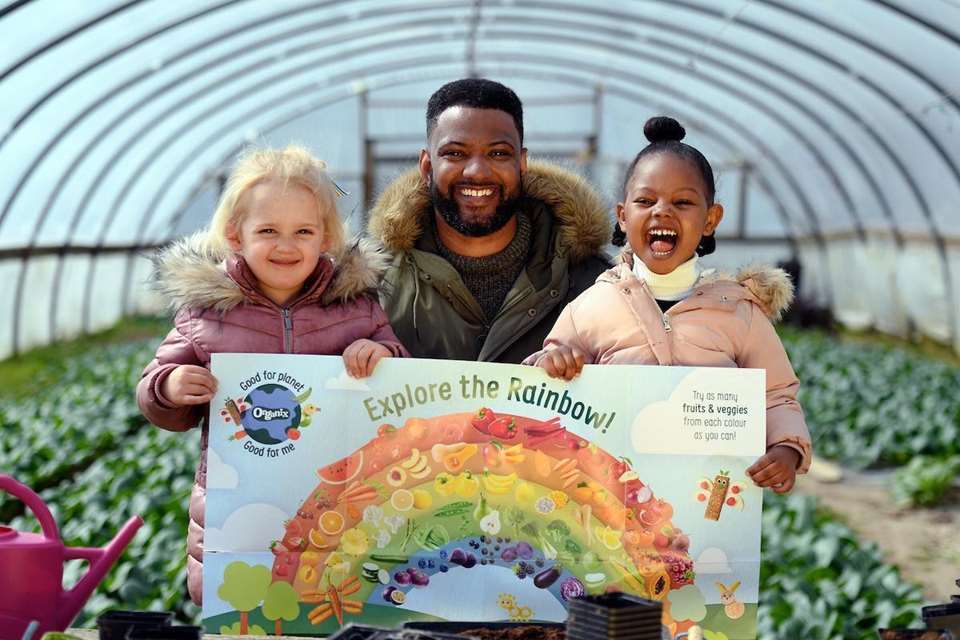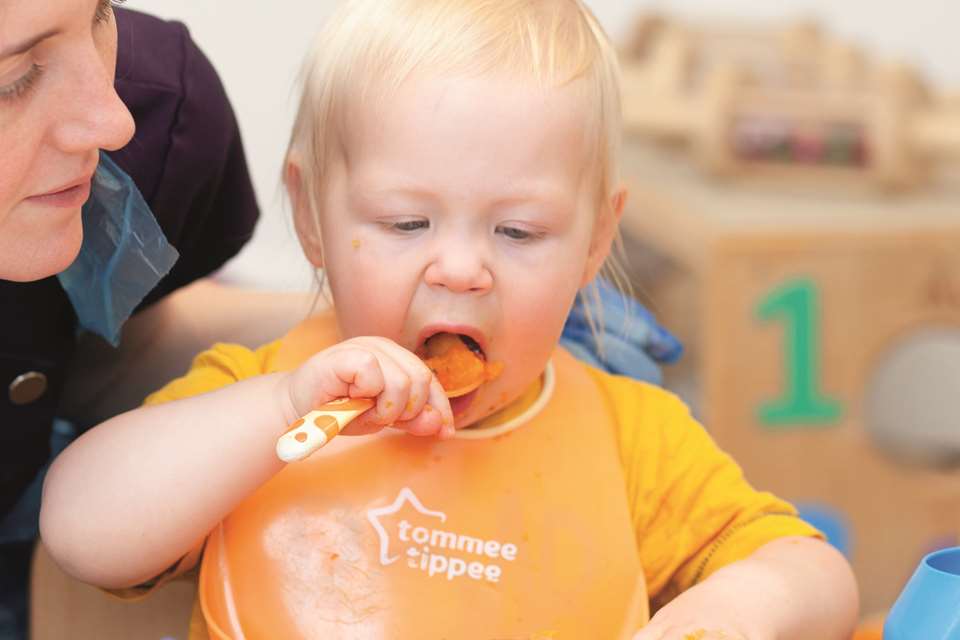Health & Nutrition - Eat your greens
Meredith Jones Russell
Tuesday, August 3, 2021
Children are naturally averse to eating unfamiliar vegetables, but there are tactics that families and practitioners can use to encourage them. Meredith Jones Russell reports
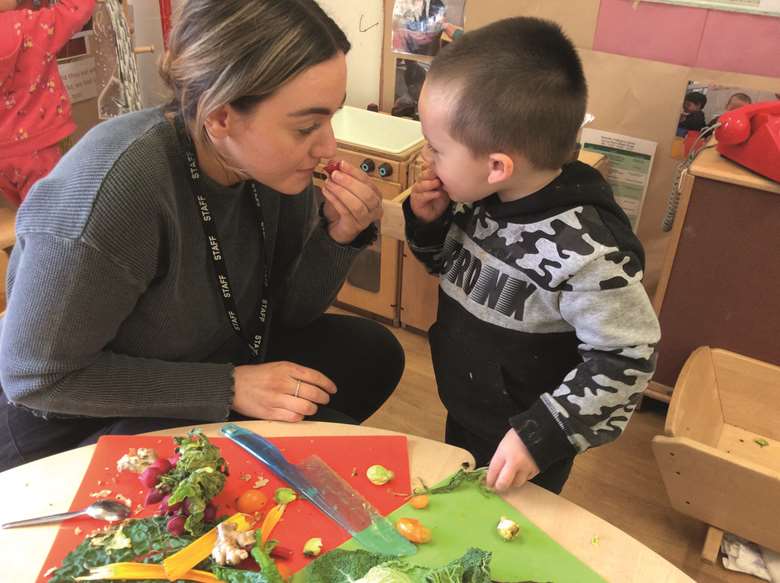
Incy Wincy's Nursery and Redclife Nursery School and Children's Centre
‘I hate vegetables!’ is a common refrain from children, and one adults often try to prove wrong, given that eating vegetables can be a great source of essential vitamins, minerals and fibre. But young children’s aversion to them might be entirely natural.
Children are particularly sensitive to taste. Babies are born with around 9,000 taste buds, but lose half their taste receptors by the age of 20. Tolerance of bitter flavours develops as we age and our taste becomes less sensitive, but for children, bitter foods can taste particularly unpleasant.
With bitterness a warning signal to our ancestors of a potentially dangerous toxin, we have a long-held natural aversion to bitter foods, many of which are vegetables, especially leafy green ones such as kale or cabbage.
Natalie Masento, senior research fellow at the University of Reading who works on the See & Eat project promoting dietary variety for children (see Further information), explains, ‘The reasons for disliking vegetables are based on evolutionary mechanisms and the cognitive development of the child, so we can assume all children have had some aversion to vegetables throughout history.
‘We know babies have a preference for sweet flavours and naturally reject bitter foods as a protective mechanism. Many of the most nutritious vegetables, like broccoli, have a bitter taste, creating an initial hurdle to overcoming their flavour and fully accepting them.’
FOOD NEOPHOBIA
When children reach two, they start to recognise foods. This can in turn cause a particular aversion to foods that are unfamiliar, known as food neophobia.
Dr Masento explains, ‘A child may reject all new foods offered to them or even start to reject foods they previously ate. Food neophobia can be overcome with increased exposure to unfamiliar food, but repeated taste exposure can be challenging as it requires persistence and time.’
It is suggested that a child must be exposed to a vegetable between eight and 15 times before they readily accept it. This means adult perseverance and patience are vital.
‘It can be easier for families to persist with a few key vegetables and overlook those which their child has an initial aversion to,’ says Dr Masento. ‘But this just further reaffirms certain vegetables as “familiar” and therefore more likely to be accepted and eaten, compared with non-familiar vegetables, which remain more likely to be rejected.’
LOTS OF VARIETY
The most-eaten vegetables in the UK are carrots, peas and tomatoes, and while each offer a wealth of health benefits, providing children with a range of options is important.
Sarah Coe, nutrition scientist at the British Nutrition Foundation, explains, ‘Food preferences and healthy eating habits learned early in life can track into later childhood and beyond. Children are known to model the behaviours of those around them, so it is important for adults to set good examples during the early years by offering children a wide variety of vegetables as well as eating them themselves.’
POSITIVE ASSOCIATIONS
In responding to children’s reluctance to eat vegetables, adults should avoid any kind of bribery or pressure, Ms Coe adds.
‘Parents and carers may resort to trying to get children to eat vegetables through coercion or force-feeding, using treat foods as a reward for eating vegetables, or hiding vegetables in other foods. However, these techniques can result in stressful eating occasions and may cause the child to like the vegetable even less.’
Instead, a fun approach to eating vegetables can help children see their greens in a different light.
Researchers at Cornell University rebranded vegetables with silly names, such as ‘x-ray vision carrots,’ ‘power punch broccoli’ and ‘silly dilly green beans’, to see if it would encourage schoolchildren to eat them. In one school, 66 per cent of ‘x-ray vision carrots’ were eaten compared with 32 per cent when they were labelled ‘food of the day’.
The British Nutrition Foundation suggests encouraging children to learn about vegetables through food-related messy play or songs, while researchers at the University of Reading have been investigating how multi-sensory exploration can influence familiarity with, and acceptance of, vegetables.
Dr Masento explains, ‘Researchers have found that even just seeing images of vegetables may help to familiarise children with them, and mean they are more likely to try them.’
The See & Eat project provides 24 free e-books to help children enjoy vegetables, each profiling a different vegetable, what it looks like and how it is grown, prepared and cooked. The project also offers a range of activities and resources to encourage multi-sensory exposure.
HOW TO HELP
Lots of early years settings already integrate similar approaches, but Dr Masento says the role of practitioners in supporting children with eating vegetables should never be underestimated.
‘Early years practitioners have an important role in supporting children to have a positive attitude towards vegetables. They have the responsibility and choice of what is available in their settings, supporting familiarity with foods which will allow children to be more accepting. Practitioners act as role models, and children will mimic them when developing their eating behaviours.
‘Acknowledging that practitioners have an important role in supporting children’s diets, just as much as families, highlights that all groups should be encouraged to create positive experiences for children with vegetables.’
FURTHER INFORMATION
CASE STUDY: Incy Wincy’s Nursery in Bedale, North Yorkshire
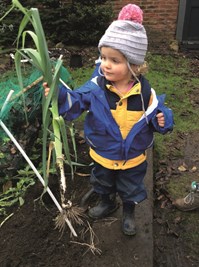
‘As adults, we assume children won’t like vegetables,’ says nursery manager Sarah Moon-Gatford. ‘We hear a lot of parents say they hide vegetables in a dish. That’s well-intentioned, but it doesn’t allow children to learn about the characteristics of the vegetable, like the colour, shape, and what it feels like.’
As a result, the nursery has made a commitment to serve at least one vegetable separately, on the side of the main dish. This encourages honest conversations between children and staff about what they are eating.
‘We need to be positive role models, but we aren’t going to tell children we love all vegetables,’ Ms Moon-Gatford says. ‘We will always be seen to try things, but we want to be honest. We encourage children, so if they say something doesn’t look nice, we suggest it might taste nice, or if they didn’t like it last time, we say they might like it this time.’
Children have a kitchen garden wish list, to which they add vegetables they have tried and liked that they want to grow from seed, and the chef regularly spends time in the garden with them.
CASE STUDY: Redcliffe Nursery School and Children’s Centre in Bristol
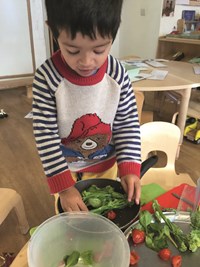
Fresh vegetables are always available to encourage children to explore and enjoy them, says head teacher Jeanette Hill. ‘We have vegetables and fruit in classrooms, play areas and home areas. Children see them everywhere,’ she explains. ‘Then they are not such a big thing, they aren’t taboo.’
Children grow vegetables from seeds and go on regular visits to local allotments and the city farm. They prepare their own stir fries in the setting’s fully equipped, child-friendly kitchen. After snack times or food sessions, they are also involved in composting and taking food waste to the wormery.
‘They are intrigued and curious about how the worms break down the food,’ says Kerry Maynard, early years practitioner and Food Project lead at the setting. ‘They get to see the whole life cycle of vegetables.’
Ms Maynard says access to vegetables helps open children up to trying things they might initially be dubious about.
‘Children are not always exposed to fresh vegetables at home, so it’s really important they have access to them here. Sometimes children are confused about what to do with them as there is such a variety and they all look so different. We let them explore vegetables; pick them up, open, smell, lick and chop them. By lunchtime, they are more open to trying things because they have gained that confidence during the day.’
Download Now

